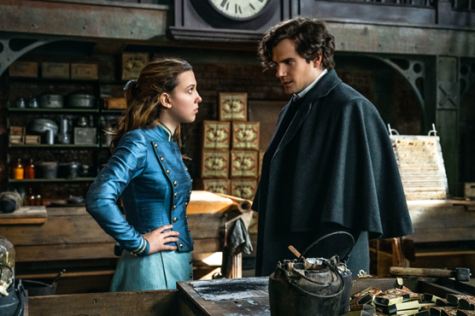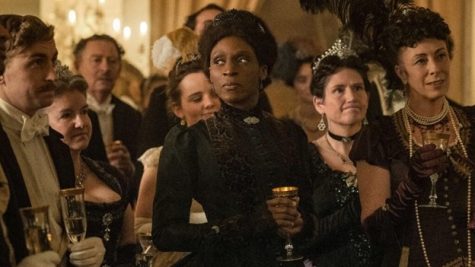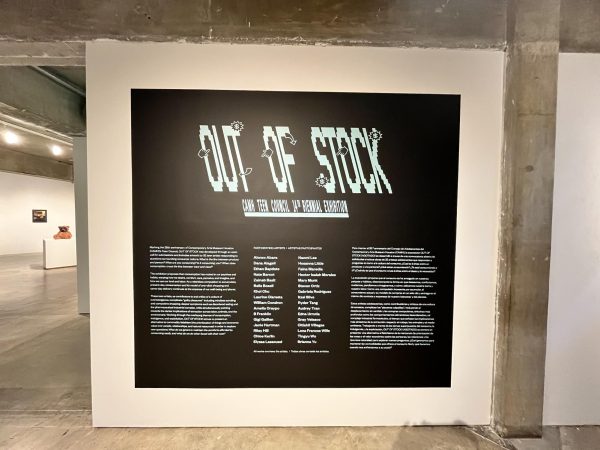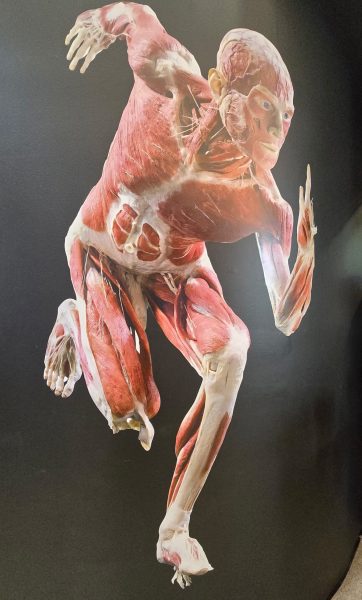“Enola Holmes 2“ meets rising expectations
Spoiler alert: This review contains spoilers for “Enola Holmes 1” and “Enola Holmes 2.”
As we are introduced to the world of Enola Holmes, we are welcomed by an action scene. With the adrenaline transferred through the other side of the screen, I couldn’t help but question why start with such an “upbeat” scene. As Enola Holmes makes her way through a small market, styled as that of the time period of 1885, it seems she is fleeing from multiple exasperated officers. No matter how fast they run, they just can’t seem to ever catch up to her. Enola traps herself in the maze of the setting, and eventually, the officers catch up. They almost seemed proud of themselves for confining a 17-year-old girl.
“Enola Holmes 2,” a much-awaited movie, came out on Nov. 4. Now, the question was if the second movie would reach the expectations of its intrigued fans and viewers from the first. The movie itself introduces new key characters such as Superintendent Grail (played by David Thewlis), Cicely (played by Hannah Dodd) and Mira Tro (played by Sharon Duncan-Brewster), while also reintroducing old characters such as Enola’s mother, Eudoria, and her partner in crime, Edith.
Fresh off the triumph of solving her first mystery in the previous movie, Enola Holmes follows in the footsteps of her famous brother, Sherlock Holmes, and opens her own agency. But as her new journey as a detective begins, she finds herself in a difficult situation. All her upcoming clients expect to consult with the other Holmes sibling but leave disappointed as they find themselves with a young girl who claims to be just as good.
As Enola becomes discouraged, she eventually decides to close for business. But as she packs her stuff, she finds herself in front of a young factory girl, imploring Enola to find her missing sister. Enola had finally received her first serious case as a detective.
Enola winds up exploring the working-class world of Victorian London, which she is unexpectedly unfamiliar with. Surrounded by dusted furniture and worn-out candles, she makes her way into what the little girl considered her home.
Meanwhile, Sherlock Holmes is stuck on a case himself, where he must cast a genius, someone who is responsible for vast sums of money disappearing from bank accounts all over London. As Enola goes deeper in depth with her case, she learns that her case is more important and dangerous than she expected. Eventually, Enola realizes that her case is connected to that of Sherlock’s and finds her way back to her older brother. How ironic.

The two separate mysteries come together much quicker, making for a more satisfying reveal at the end.
As Enola sneaks her way through inconvenient situations, she finds herself crossing paths with the charming Viscount Tewkesbury once again, the spark between them still unsurprisingly alive. Enola teaches him how to fight in exchange for him teaching her how to dance. In the scene itself, we discover the magnetic energy between the two, where at some point it seemed as if they both would build up the courage to finally kiss, until they were unfortunately interrupted by a group of girls. Both characters were separated away from each other once again but reunited later in the movie.
Throughout the movie, there seems to be a deeper purpose. As the movie is mainly focused on Enola Holmes’ experience, we get an insight as to what the world was like for young factory girl workers. Enola realizes her privilege as an upper-class woman and uses her advantages to help people that need it. The script itself features the struggles for the fight for women’s rights and class inequality whereby the time was completely blind to the eye of those in power. As the movie progresses, we understand the importance of unity and how much power women can uphold if they rebel as one. We get an insight of this in one of the last scenes in the movie where all the young workers come together to quit as Enola and Cicely convince them that the factories were leading them to their eventual death.
At the end of the movie, Enola figures out her case and finds the little girl’s sister. All the mystery pieces come together in a satisfying way, where all questions are answered. The disappearance of the sister made sense. Cicely was escaping from many men in power, the factory owners, and had vital information that could ruin it all for these men in power, but she sacrificed her safety to bring justice for all those other girls in the factories. Apparently, she had paperwork that proved that factories had been using chemicals that were endangering the children’s safety. The factory was covering it up by saying it was a new disease, when in fact it was the powder coming from the lits they were manufacturing that caused the children to get sick. The powder was cheaper, meaning that the output was higher; they were spending less money while gaining more money. With this information out, the whole business would be jeopardized, so the factory owners needed to find Cicely to make sure that she would keep her mouth shut. Cicely on the run from the factory owners also meant she was also on the run from Enola, since wherever Enola was, the policemen would follow.
But who was in charge of all of this; if it was not Cicely or her lover, nor Superintendent Grail, then who? It ought to be someone intelligent, a super genius indeed. Someone educated with a great amount of wealth—or at least, that’s what one would think. Behind it all, the “man” in power was indeed not a man, but a woman, and more surprisingly, a woman of color: Mira Tro. Mira had appeared at the beginning of the movie, but she was not part of anything significant: she was only the factory owner’s secretary, and even then, she was not used or heard from much at all. Enola herself had had an encounter with her at a ball dance, how ironic. Enola had whom she and her brother were looking for right in front of her nose, but not for once did she doubt or interpret anything going on.

Mira revealed herself at the end of the movie, where she displayed herself as thinking about the whole situation as a riddle, a silly game where she displayed her true intentions and capabilities. While everyone doubted her, they were really giving her more power. How could someone like her have the knowledge to take control of such an agency?
The end was depicted heroically, where the little girl saw her sister once again, Enola and Sherlock solved their cases and the young factory girls had achieved one more step to women’s rights. For me, the movie itself was inspiring yet informative. “Enola Holmes 2” is still an improvement over the first movie because Enola doesn’t just learn about the world outside her isolated home life–she actually helps others to change it as well. The Enola Holmes movies aren’t just delightful mysteries focusing on a plucky teenage detective and a spectacular cast of supporting characters; they also hold a magnifying glass over the world of Victorian London, one often glamorized in other adaptations. The hand holding that glass is shaky though, and still obscures part of the view. With such marked improvement, maybe the next film will get it down perfectly. And Enola Holmes does deserve a third move, and perhaps a fourth and fifth. She’s a wonderful heroine who not only works well with her famous brother, but also on her own. The world deserves more Enola Holmes.
Your donation will support the student journalists of Carnegie Vanguard High School. Your contribution will allow us to cover our annual website hosting costs and fund field trips, competition fees, and equipment. We appreciate your support!

Abigail Nunez, has two older brothers and a best friend named Esperanza. She has always had a thing for sports , and now plays with the u17 National Salvadorian...








Nina Nguyen • Nov 14, 2022 at 10:00 am
The sequel definitely didn’t disappoint me either! I love how you tied in the historical importance the film showcased!